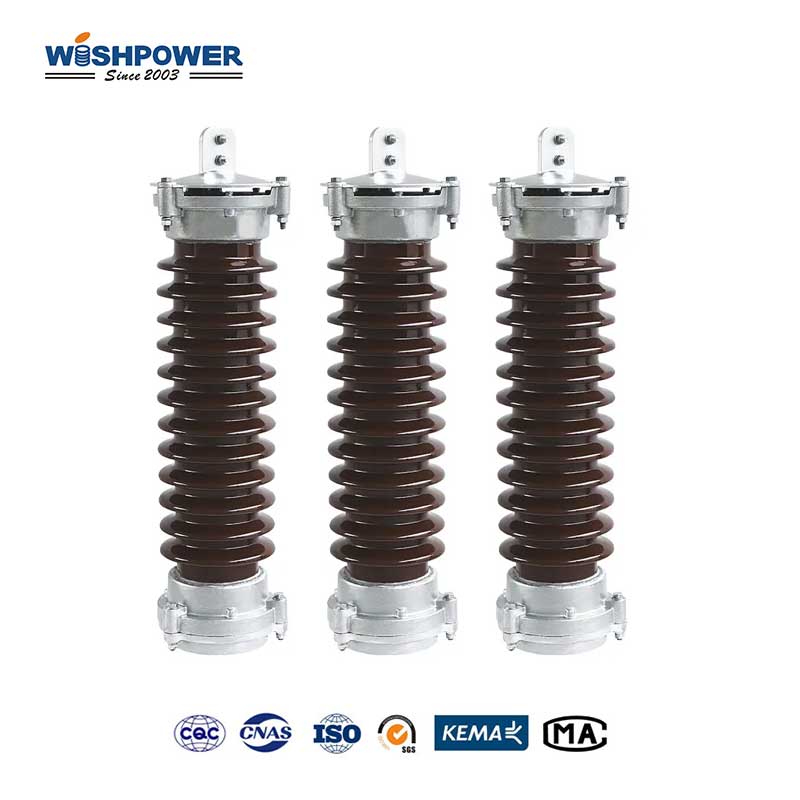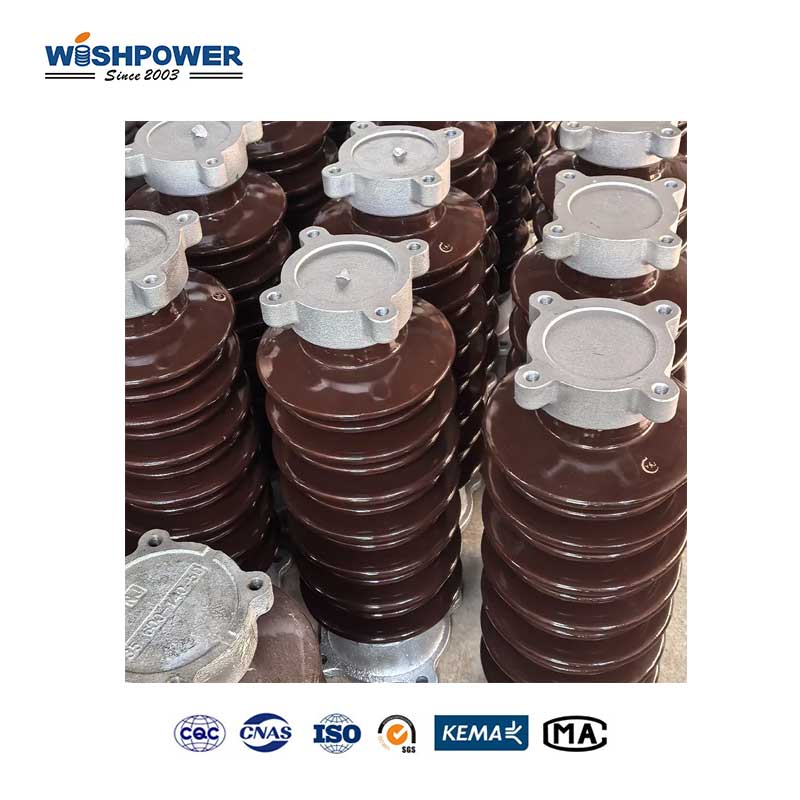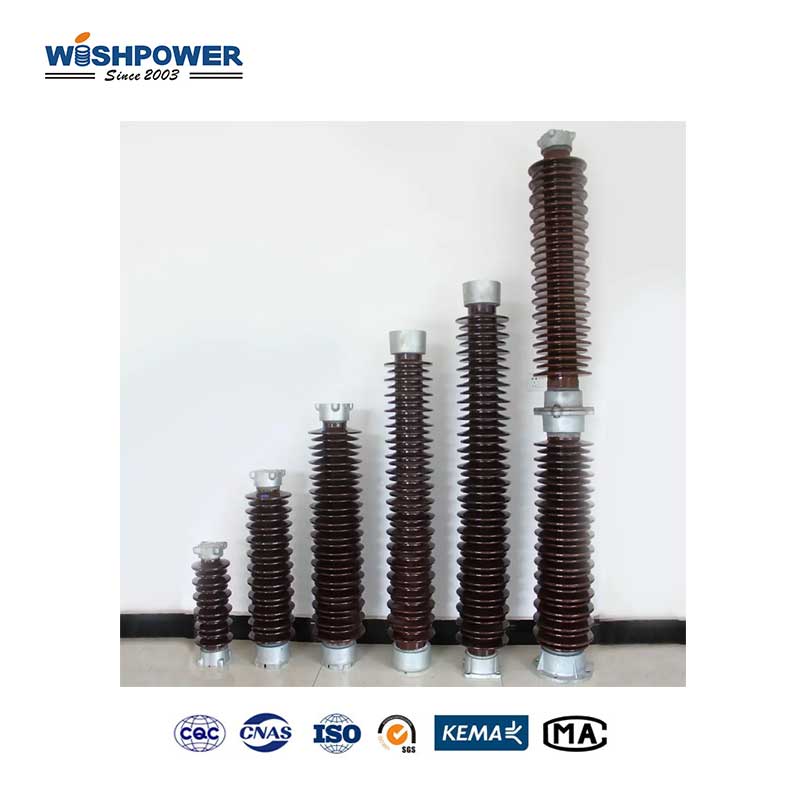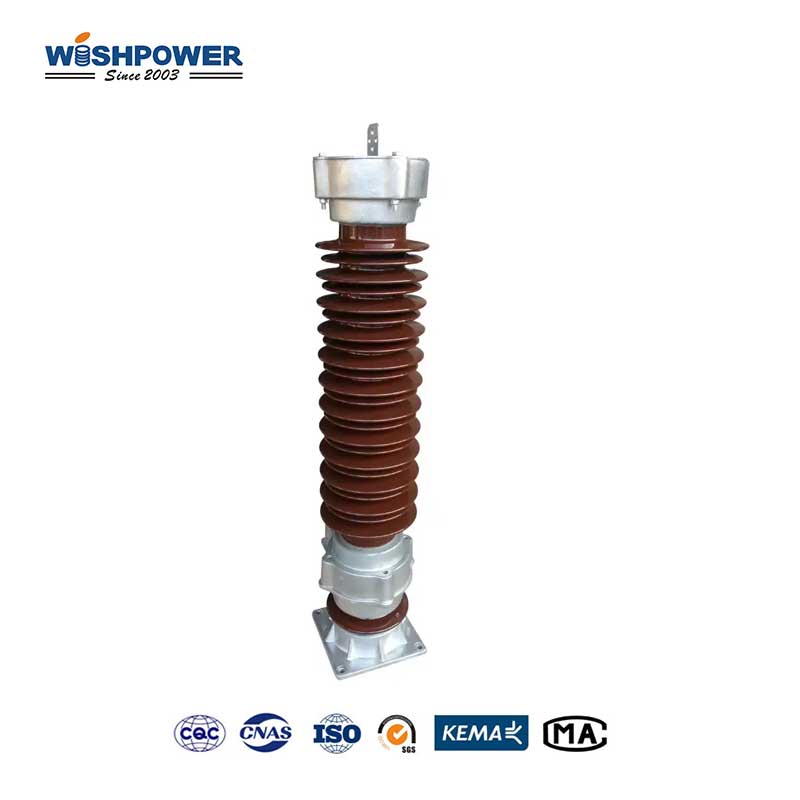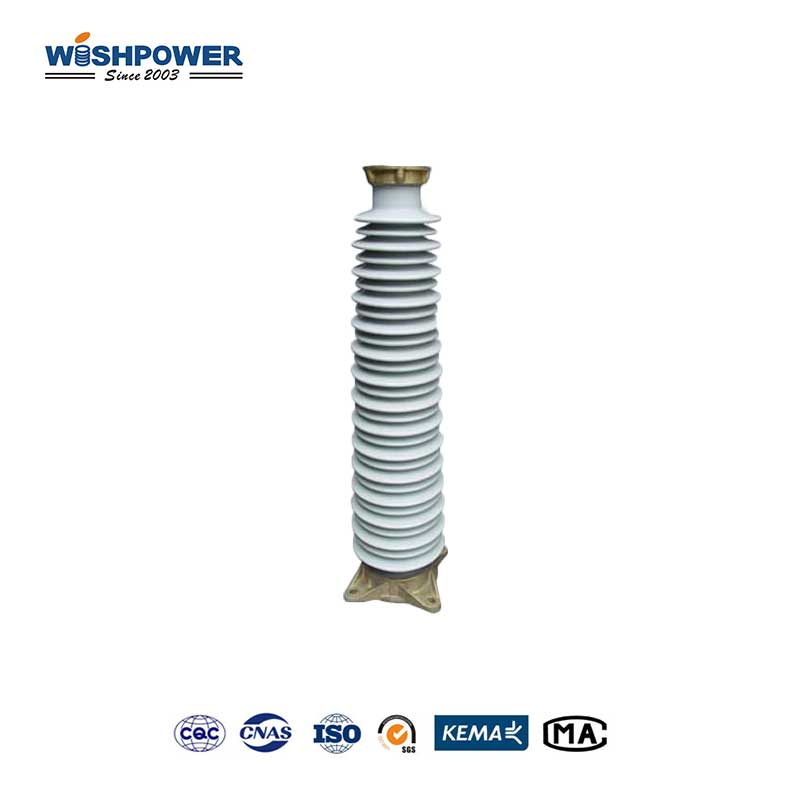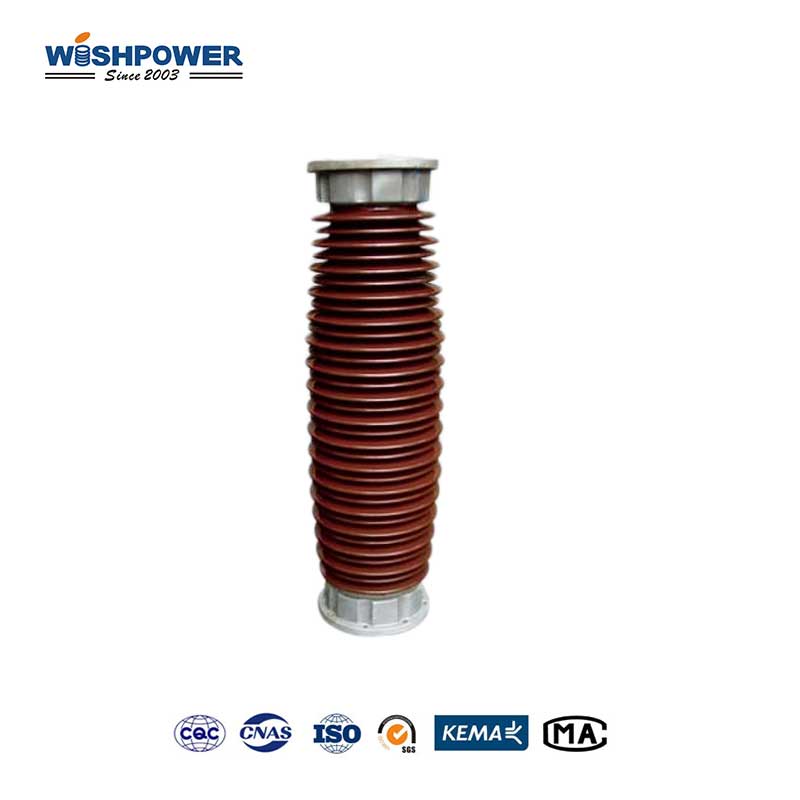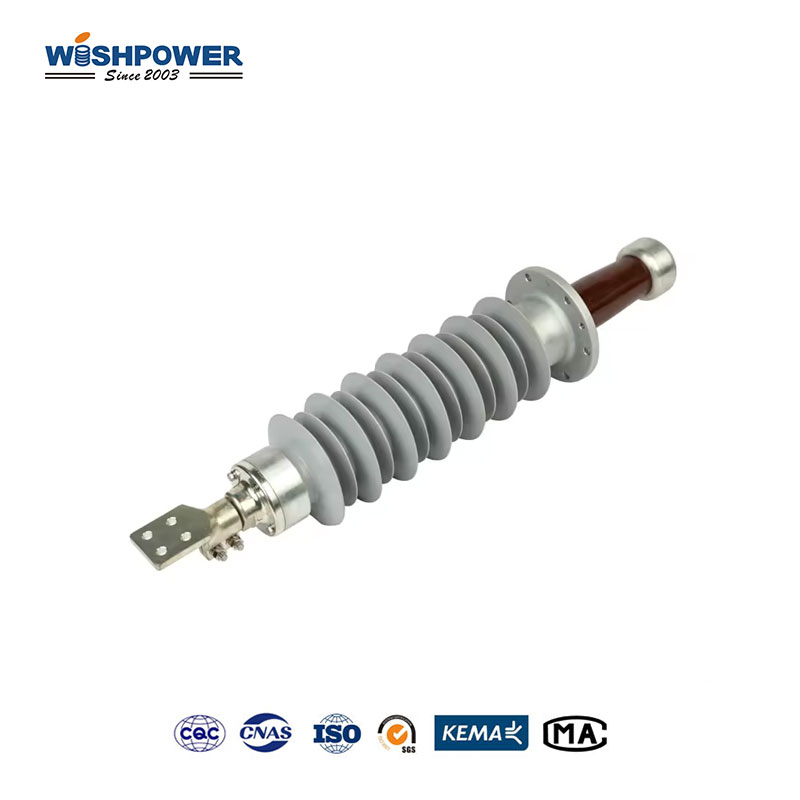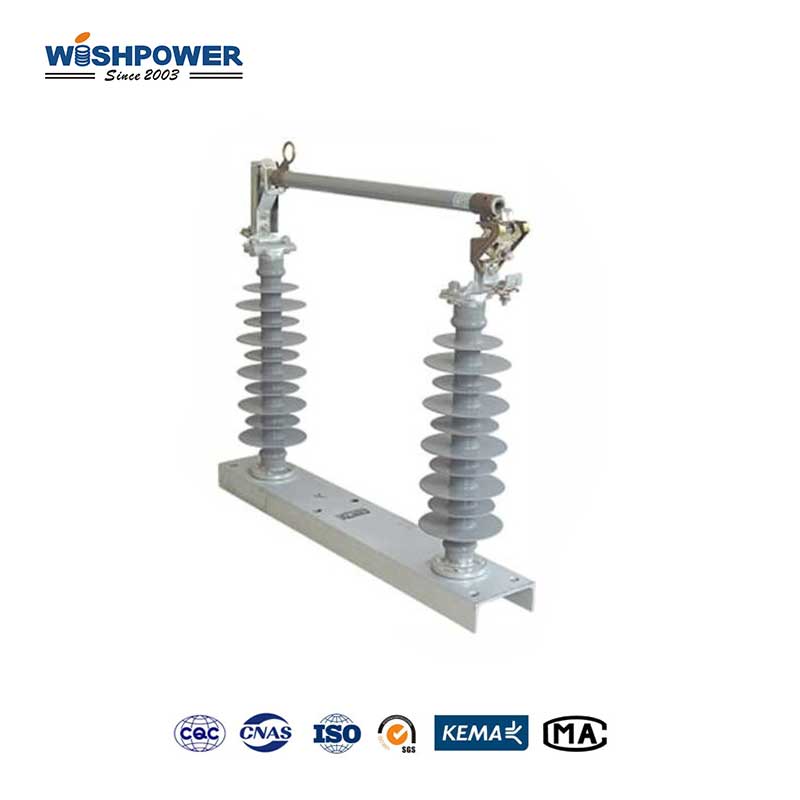Specification
| Rated Voltage(kV) |
330 |
| Shed No. |
36/35 |
| Creepage Distance(mm) |
11253 |
| Main Dimensions(mm ) |
H |
3800 |
| h |
3430 |
| h1 |
60 |
| D |
560 |
| d1 |
180 |
| d2 |
240 |
| d3 |
350 |
| d4 |
410 |
| d5 |
470 |
| Weight |
563 |
The table above is just one of our product parameters. If you want more information, please get in touch with info@wishpower.net
What is ANSI Standard Porcelain Transformer Bushing?
ANSI Standard Porcelain Bushing is an important insulating component for circuits that pass through locally earthed transformer enclosures. It has high mechanical strength and better insulation, allowing you to use it in almost any type of environment. ANSI standards specify that the bushings are generally designed to meet mechanical and electrical reliability during normal operating conditions and some overcurrent, but not overvoltage. Consequently, designers must test the bushings in their prototypes according to relevant parameters like voltage and temperature stress as well as the physical integrity of the transformer body. It focuses on catering to the needs of North American electrical systems. This entails making sure it fails to break the jail compatibility for regional power grids, transformers, and distribution networks. They are built to withstand high-voltage applications with minimal leakage currents and prevent electrical discharges, which further ensures their reliability in shielding transformers from insulation failures.
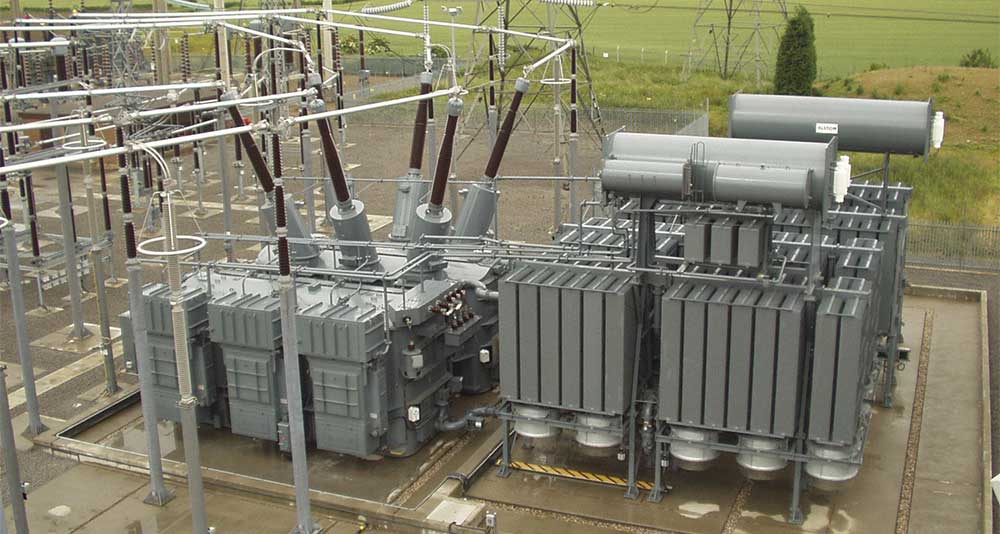
IEC VS ANSI
- Geographical Scope
IEC standards are accepted worldwide and are used by most countries, while ANSI standards are more specifically for the United States or particular regions like America. IEC emphasizes uniformity around the world, and ANSI caters to US market requirements.
- Standardization Approach
The purpose of IEC standards is to harmonize technical requirements globally, to facilitate international trade, and to ensure compatibility. At the same time, the ANSI standards focus on the specific regulatory, industrial, and operational features of North American electrical systems to ensure open communication with the local current infrastructure.
- Voltage and Frequency Specifications
IEC standards are based on a 50 Hz power source, which is usually used in most of Europe (long form — International Electro-Technical Commission. Assigning with the 60 Hz frequency employed in America and far for North America, the standards followed are referred to as ANSI stats. Thus, ANSI standards are more suitable for regional electric grids whereas IEC is appropriate for broader applications extending globally.
- Testing and Compliance
Meanwhile, as they are drawn up internationally, IEC standards typically may address climatic and other global variables across a range of environmental tests, making them more comprehensive overall. Mostly ANSI standards are more localized and towards the codes of compliance, safety, etc.. to make sure the products should not hamper with rest available in the market and maintain a standard mark toward response over the American region.
- Design Considerations
ANSI standards often exhibit more severe environments and requirements e.g. harsh weather or mechanical strain that is commonly found within North America which in turn results in a majority of American specifications asking for the solution to be more robust. IEC standards may offer a more global perspective on international applications but are not as detailed for regional complications.
Is ANSI Standard Porcelain Transformer Bushing better than IEC standard?
There is no direct winner amongst which type of bushing is better. This is true even for ANSI standards, bushes in transformer are (go figure) very much oriented around the needs of the North American market and compatibility with a 60 Hz AV grid. Therefore, ANSI bushings are the ideal choice for transformers intended to be applied in North America—where strength and toughness are important factors like cold weather or mechanical loads. Safety and performance are key features for bushings, as both the ANSI and IEC standards require. However, testing criteria and designs have been geared toward their respective geographical requirements. While ANSI bushing styles may provide benefits in local North American deployments, IEC bushings can offer similar advantages globally and help to ensure that projects maintain standardization and compliance with international regulations. The choice between ANSI and IEC bushings depends on the geographical location of the transformer system, the grid specifications and the specific operating conditions.
Why choose Wishpower’s power transformer bushing?
- Wishpower was founded in 2003 and has more than 20 years of experience in production, R&D, and sales.
- We have professional production equipment and testing equipment, as well as professional high-voltage electrical and mechanical testing laboratories.
- Our customers are all over the world, and our customers include well-known companies such as Honeywell and SIEMENS.
- Each of our products undergoes strict mechanical and electrical tests before leaving the factory. Only qualified products can be delivered to you normally.
- Our professional after-sales team provides you with real-time technical and solution support.
Certificate

Factory

Hot Tags: ANSI Standard Porcelain Transformer Bushing, Porcelain Bushing, China, manufacturers, ISO factory, wholesale, KEMA, high quantity, best, price, low to high voltage






